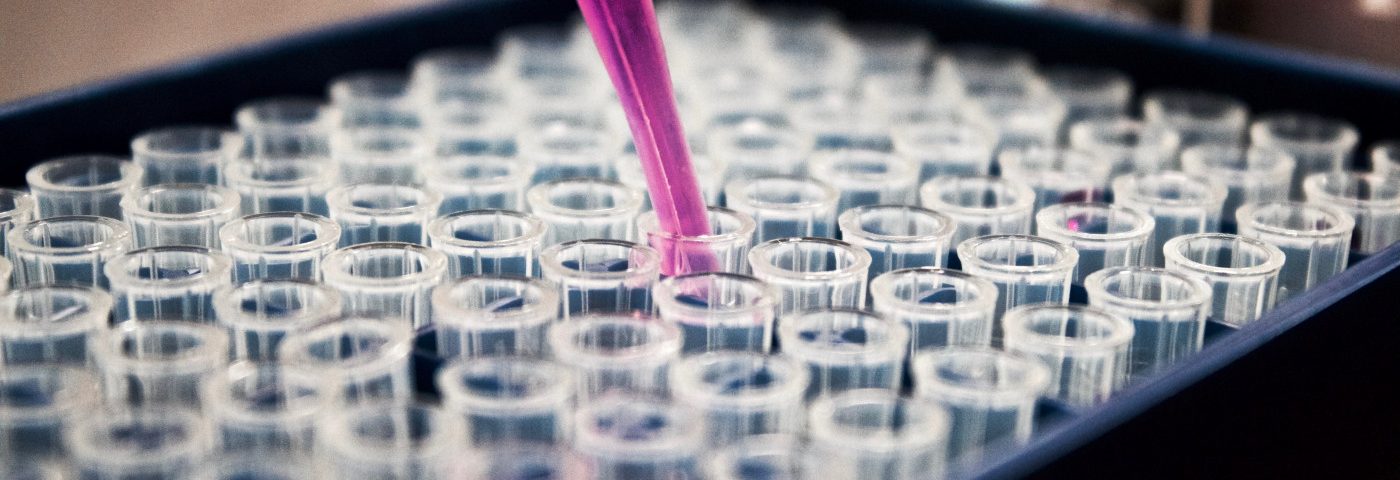Data from early studies suggest that Intellia Therapeutics‘s proprietary CRISPR/Cas9 technology can more effectively generate tumor targeting T-cells than conventional methods, and support testing NTLA-5001, the company’s engineered cell therapy candidate for acute myeloid leukemia (AML), in people.
Findings were presented at the annual meeting of the American Society of Gene and Cell Therapy (ASGCT), which took place in mid-May. Owing to the COVID-19 pandemic, the meeting was done virtually.
T-cells are a type of immune cell that’s able to recognize specific molecular patterns (antigens) through a T-cell receptor (TCR) — a given receptor specifically recognizes one type of antigen. When a T-cell receptor binds to its specific antigen, the T-cell works to kill the cell on which that antigen is found. This is a major component of anti-tumor immunity that occurs naturally.
This process is also the basis for some therapies that aim to make more T-cells with a cancer-specific receptor, with a goal of allowing for a more powerful anti-tumor immune response. Intellia’s technology makes use of CRISPR/Cas9 gene editing to, in essence, delete the receptor that exists within a T-cell (the endogenous TCR) and replace it with a receptor that is specific to a tumor antigen.
“At Intellia, we are applying our CRISPR/Cas9 technology to develop new processes that can produce enhanced engineered cell therapies to treat severe cancers, such as AML, that traditional approaches cannot address,” John Leonard, MD, president and CEO of Intellia, said in a press release. “Our proprietary platform provides a powerful tool to generate more potent TCR-directed cells, that can treat blood cancers initially and potentially solid tumors.”
In one ASGCT presentation, “Enhanced tgTCR T Cell Product Attributes Through Process Improvement of CRISPR/Cas9 Engineering,” researchers from Intellia and IRCCS Ospedale San Raffaele, in Italy, reported on cell work using Intellia’s process for engineering T-cells with tumor-specific T-cell receptors.
Results showed the process was able to remove the endogenous TCR with over 99% efficiency. It was able to insert a receptor against Wilms’ Tumor 1 (WT1; a protein commonly expressed at high levels in AML cells) in 50%–70% of T-cells.
A major challenge in the use of engineered T-cells is that — after receptor engineering — the cells need to be grown (expanded) in a lab until there are enough to be infused back to a patient, where they can work as therapy. Unedited T-cells expand roughly 100-fold after 10 days of lab culture. Cells engineered using Intellia’s process grew by a similar amount in that time. In contrast, conventionally engineered cells expanded significantly less in the same amount of time — after two weeks, conventionally modified T cells had expanded less than 50-fold, the researchers reported.
More rapid expansion would be expected to shorten manufacturing times, allowing patients to be treated more quickly.
Researchers also showed that T-cells engineered with Intellia’s methods were more active than conventionally engineered T-cells; for instance, in response to WT1, they secreted more inflammatory signaling molecules (namely, interleukin-2 and interferon gamma).
The engineered T-cells also reduced tumor growth and prolonged survival in a mouse model of leukemia.
Many types and subtypes of T-cells are known, each with particular functions. Broadly, CD8 T-cells are those able to directly kill cancer cells, whereas CD4 T-cells provide support in this effort (e.g., secreting inflammation-mediating signaling molecules).
Conventionally, therapies based on T-cell receptor editing have focused almost exclusively on CD8 T-cells; those that do include CD4 T-cells often require additional engineering to make the cells functional.
In another ASGCT presentation, “Exploiting CRISPR-Genome Editing and WT1-Specific T Cell Receptors to Redirect T Lymphocytes Against Acute Myeloid Leukemia,” researchers showed that Intellia’s process was able to effectively generate functional CD8 and CD4 T-cells with tumor-specific receptors. (The presentation is on page 40.)
These cells significantly reduced tumor burden in a mouse model of AML, they reported. The mice also showed no sign of graft-versus-host disease, a complication where the engineered T-cells attack healthy tissue in addition to the cancer.
Collectively, these data “validate Intellia’s approach of reducing AML tumor cell blasts, and our plans to enter the clinic with NTLA-5001 next year,” Leonard said.
Intellia announced plans to submit an Investigational New Drug (IND) application, requesting a right to use NTLA-5001 in AML clinical trials in the U.S., in the first half of 2021.

